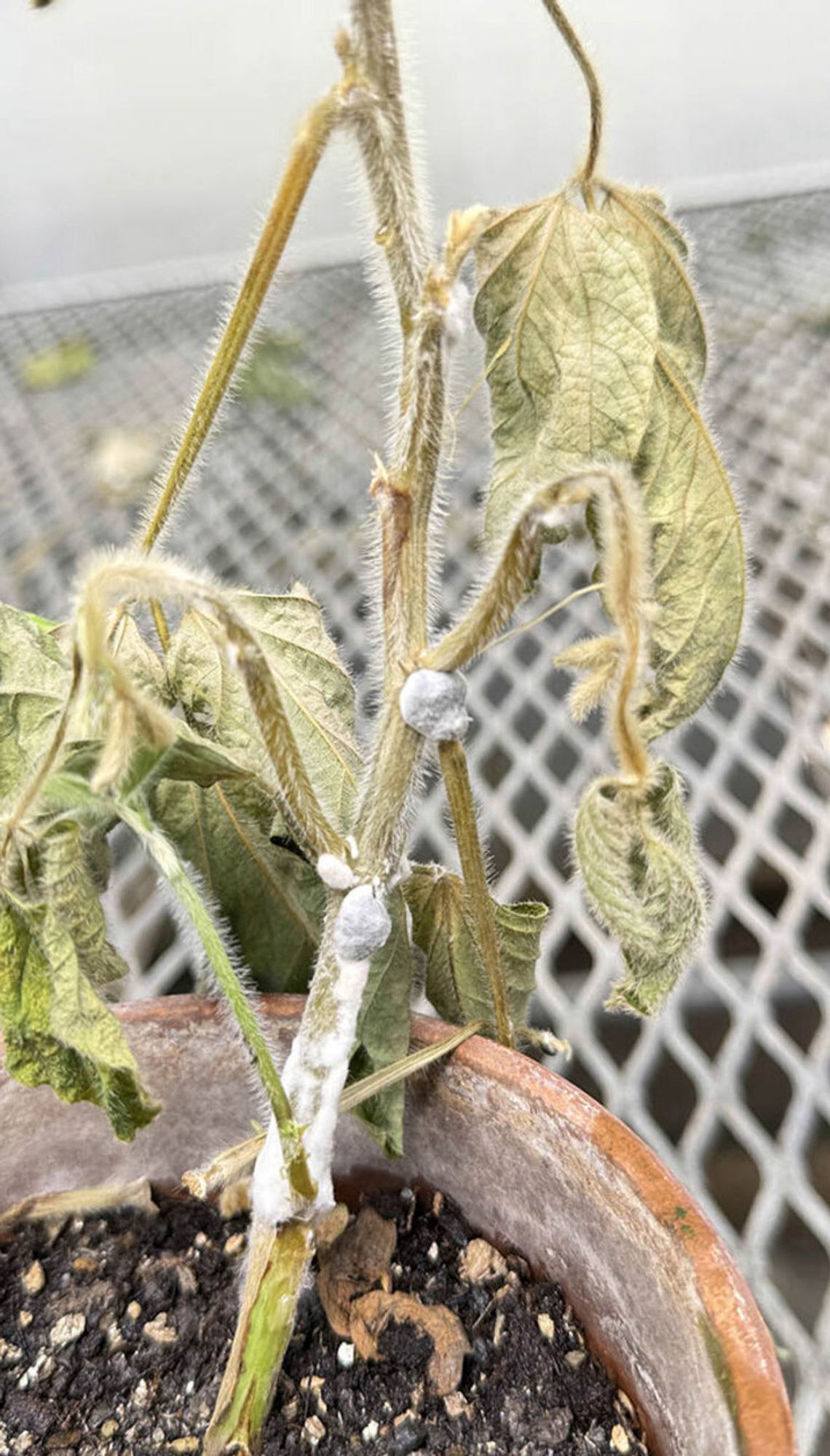White mold (Sclerotinia stem rot) in soybeans is a fungal disease. This disease survives in the soil between seasons. It is a hard black dark structure called sclerotia.
The disease typically prevents successful pod development and produces more sclerotia on and in the stems, which can be scattered back into the soil during harvest and survive for several years.
During the flowering process, wet soil and a full canopy encourage the emerging of mushroom-like structures that release millions of airborne spores. These mushroom-like structures are also known as apothecia.
Soybeans infected by the spores, senescing blossoms, and injured tissues, which require free moisture for infection. White mold often prevents successful pod development and produces more sclerotia on and in the stems.
The white mold process begins with wilting and discoloration of leaves, followed by stem and pod infections that show white, cottony fungal growth and black sclerotia. Water-soaked lesions usually form near colonized flowers.
The stems become tan, brittle, and hollow, sometimes having sclerotia. Stems that are usually affected can be shredded when pulled apart and showing signs 6 to 14 inches above the soil surface. The lower stems may also be infected.
The environmental mold conditions are contributed to by wet, humid conditions with moderate temperatures. White mold is more common in the northern Nebraska counties and in irrigated fields throughout central Nebraska.
What precautions can be taken for white mold? Selecting a soybean variety that is rated against white mold and shorter varieties that do not lodge.
In a field history of white mold, using a wider row spacing of 30 inches instead of 15 inches helps delay the canopy closure and reduces humidity.
If possible, avoid irrigating during the flowering stage. Rotating with a non-host crop and supporting good weed control can help with white mold.
Applying foliar fungicides during the critical window of the flowering stage and favorable weather conditions helps with white mold disease development.
Late applications made after the infection window are not effective.

White mold is on the move — and this year could be one for the record books. If your fields have a history with this disease, now is the time to act. DYLAN MANGEL, UNL EXTENSION PLANT PATHOLOGIST | CLAY COUNTY NEWS



